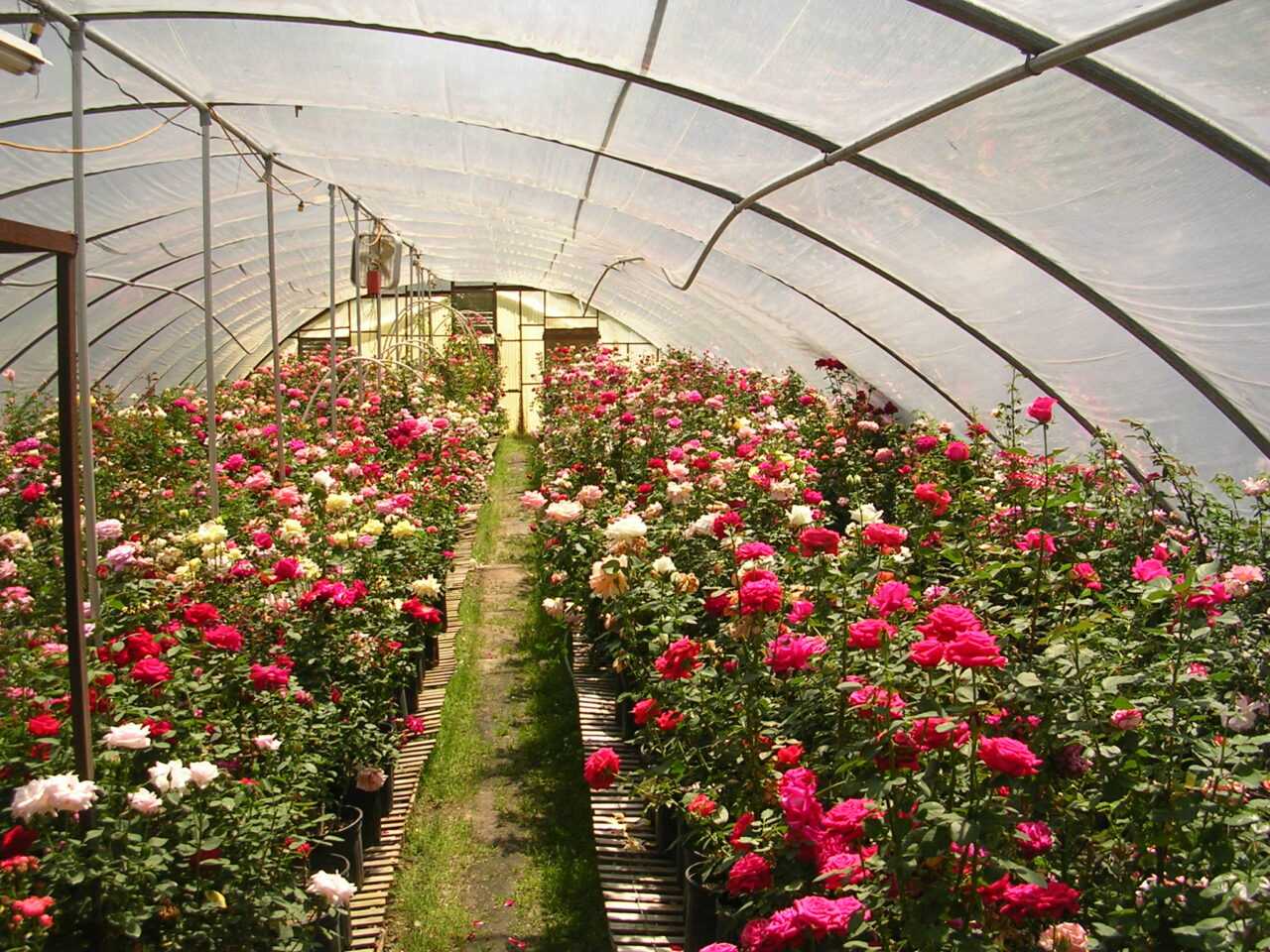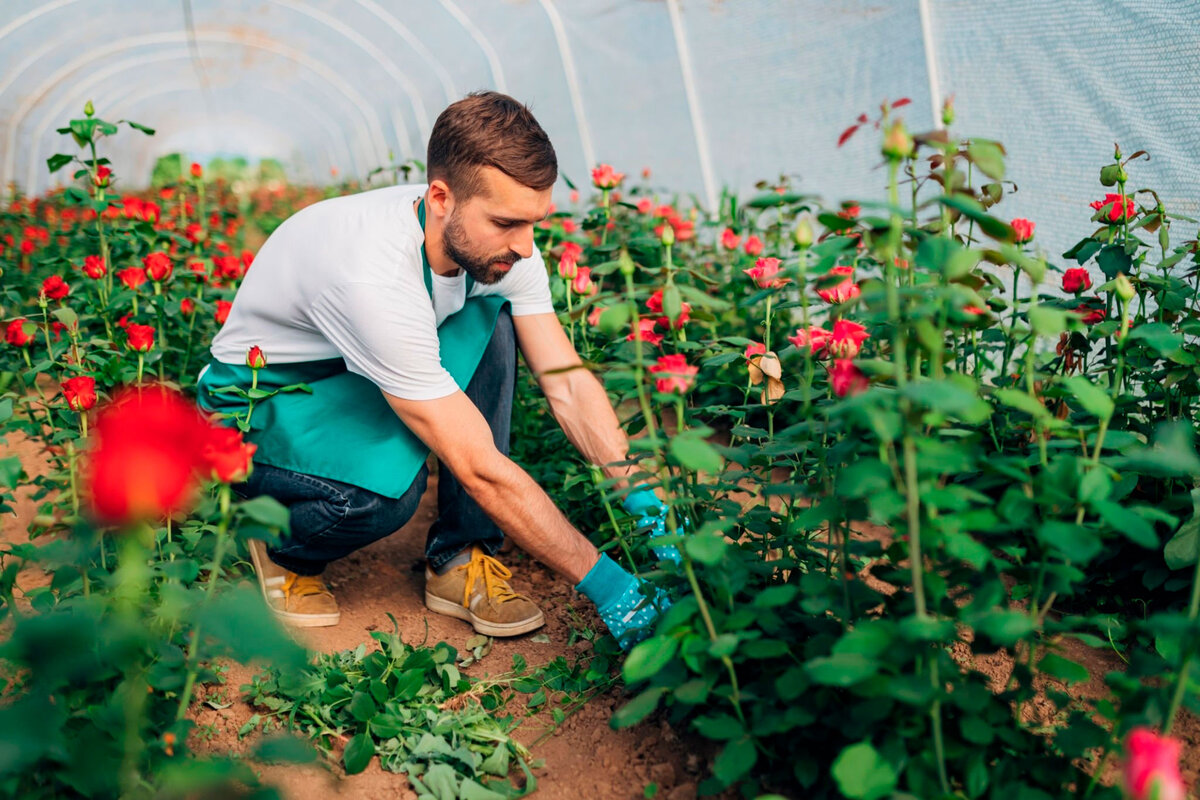How to grow roses in a greenhouse? When to plant and how to care for them?

Growing roses in a greenhouse – is not only a way to get beautiful flowers all year round, but also a complex process that requires attention to detail. How to choose the right variety? What kind of soil do you need? How to care for plants so that they produce strong buds and do not get sick? Let's look at all the nuances so that your greenhouse becomes a real rose garden.
Selecting a Rose Variety for Greenhouse Growing
The first step is choosing the right variety. A mistake at this stage can lead to poor flowering or frequent diseases. Which varieties are best for a greenhouse?
The best varieties of roses for greenhouses:
- Hybrid tea roses: Grand Prix, Red Naomi, Avalanche, Peach Avalanche – have large buds, are resistant to diseases and are suitable for cutting.
- Floribunda: 'Nina Weibull', 'Kimono', 'Rumba' – produce abundant flowering, suitable for both cutting and decorative growing.
- Miniature roses: "Baby Masquerade", "Patio Heat" - compact, ideal for potted growing in greenhouses with limited space.
- Spray rose hybrids: 'Bombastic', 'Typhoon' – produce several buds on one stem, which makes them ideal for commercial cultivation.
How to choose the right variety?
- Resistance to fungal diseases. In closed soil, there is high humidity, which provokes the development of pathogenic microorganisms.
- Duration of flowering. Some varieties bloom once a year, others - repeatedly during the season.
- Height and shape of the bush. Compact varieties are less demanding in terms of pruning, while tall varieties require trellises or frames.
- Smell and color. If you grow roses for sale, consider the preferences of buyers - some varieties have a pronounced aroma, others are more neutral.
Expert tip: If you are growing roses for commercial purposes, choose varieties with dense petals and buds that are resistant to transportation.
Preparing the soil and planting roses

Roses are demanding of the soil composition. Poor aeration and lack of nutrients negatively affect the development of the root system. How to create ideal conditions?
Soil requirements:
- Acidity: Optimum pH 5.5-6.5. If the soil is acidic, add dolomite flour (300 g/m²).
- Structure: Loose, permeable to air. Drainage can be improved by adding perlite or sand (20-30% of the soil volume).
- Organics: The soil should contain humus (5-6 kg/m²) to ensure long-term nutrition of the roots.
- Drainage: Rose roots do not tolerate stagnant moisture, so it is recommended to lay a layer of expanded clay or gravel.
Planting scheme:
- Distance between bushes: 30-50 cm for low-growing varieties, 70-100 cm for tall ones.
- Planting depth: The root collar should be 3-5 cm below the soil level.
- Mulching: A 5-7 cm thick layer of mulch (peat, tree bark) helps retain moisture and prevent weed growth.
Expert advice: Before planting, soak the roots in a growth stimulator solution (Kornevin, Heteroauxin) for 3-4 hours - this will speed up the rooting and adaptation of the plants.
Optimal conditions for growing roses in a greenhouse
What temperature and humidity do roses need? What mistakes do novice gardeners most often make?
- Temperature:
- In spring and summer: +16…+22°C.
- In winter: +12…+16°C (growth slows down with insufficient lighting).
- Lighting:
- Minimum 12-14 hours of light per day.
- In winter, it is recommended to use additional lighting with phytolamps with a power of 30-50 W/m².
- Humidity: Optimum level 60-70%. When exceeding 75% the risk of fungal infections increases.
- Ventilation: Open the windows 2-3 times a day to prevent stagnant air.
- Drip irrigation system: allows you to maintain an optimal level of humidity without sudden changes.
Expert advice: If the air in your greenhouse is too dry, install a misting system – it will help maintain stable humidity, especially during hot periods.
Watering and fertilizing roses in a greenhouse

Proper watering is the key to healthy plants. How to avoid over-watering the soil and avoid root rot?
Watering:
- In spring and autumn – once every 3-4 days.
- In summer – 3-4 times a week.
- The water should be warm (+18…+22°C).
- Watering is carried out in the morning or evening to avoid evaporation of moisture.
Top dressing:
- In early spring – nitrogen fertilizers (urea 20 g/m²) to stimulate shoot growth.
- Before flowering – phosphorus-potassium fertilizers (superphosphate 30 g/m², potassium sulfate 20 g/m²).
- During the period of active flowering – organic matter (infusion of mullein 1:10, bird droppings 1:20).
- In autumn – complex fertilizers to prepare plants for winter.
Expert advice: Avoid frequent nitrogen applications after flowering begins – it stimulates the growth of greenery at the expense of buds.
Growing roses in a greenhouse
Growing roses in a greenhouse requires attention to temperature, humidity and nutrition. If you follow all the recommendations, you can get lush flowers all year round.
Do you want to create ideal conditions for growing roses? Choose greenhouses from NovaTeplitsa – they provide reliable plant protection and create an optimal microclimate. Check out the models on our website and start growing roses with maximum efficiency today!





